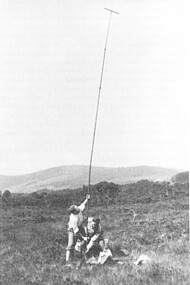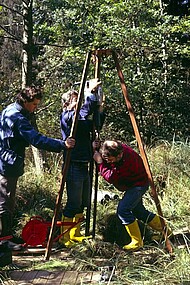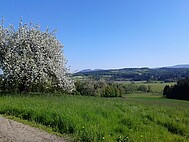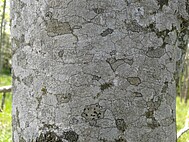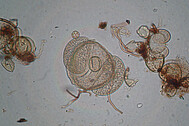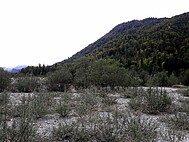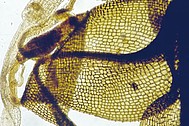Research of the Botany section
While research into mosses, lichens and fungi is mainly concentrated in Baden-Württemberg, Germany and partly Central Europe, research in the field of vascular plants and ethnobotany is global and focuses on mountainous and low mountain range regions worldwide. There are several focal points.
Vascular plants, bryophytes, and lichens
Cultural landscape and cities
In Central Europe, nearly all ecosystems and vegetation units are modified by man (e.g., forestry instead of virgin forests) or even were newly created (e.g., mown grassland, arable land, gardens). Anthropogenic influence can easiest be recognised in two complexes: First, our cities. They harbour niches for plants at diverse (open) sites, which are however mostly very small and variable in type and intensity of use. And second, our cultural landscape, and the rich mosaic of various types of grasslands, arable fields, orchards, and forests that it consists of. However, even the nearly pristine ecosystems such as raised bogs are altered due to anthropogenic impact – drainage, airborne nutrient input, and others. Therefore, it is up to us to study the influence of these various factors.
Species and ecology
The flora of Central Europe is quite species-rich due to a wide range of geological and ecological conditions. Species diversity can be described on different levels, including anatomy, function, natural product chemistry, molecular genetics, ecological adaptations, etc. Data gained from studies on such topics are relevant for various research fields. Species determination, i.e., identification of characters and traits relevant for determination, is a fundamental part of this research, and further parts are research on diversity and evolution (speciation processes, difficult species groups) and on ecology including habitat characteristics, species competition, etc. And finally, another very important topic is research on non-indigenous species introduced or deliberately cultivated in Central Europe.
Vegetation and nature conservation
The vegetation surrounding us is shaped based on ecological conditions and anthropogenic influence, pristine nature and land use. Some types of land use even had or have an positive effect on diversity: the species-rich and »colourful« nutrient-poor grasslands are a perfect example. However, excessive use of valuable sites negatively effects both, species richness and structure, and the same is true for abandoned or fallow land. Various conservation measures are applied in order to maintain diversity and to promote endangered species. To make measures successful, a scientific background is needed – vegetation analysis describes the historical development of present plant communities as well as ongoing processes and relationships, while population biology studies the diversity within communities. An integrated view of this research makes it possible to give practical recommendations for agriculture and nature conservation.
Fungi and algae
Our mycology research studies the ecology and distribution of native fungi with emphasis on mushrooms of urban areas. This includes a survey of the fungus flora of Karlsruhe and its change over time; this work is done in collaboration with the “Fungi workgroup” of the Natural History Society Karlsruhe.
In addition to these local studies, taxonomic and phylogenetic research focuses on rust fungi and mildew fungi. The distribution and spread of obligate phytoparasitic fungi is examined. Introduced species (Neomycetes) and their influence on host plants are of special interest.





